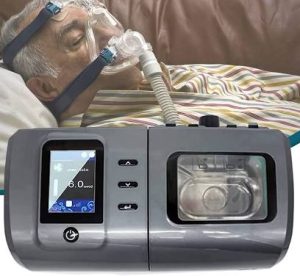 BiPap is a type of ventilator.
BiPap is a type of ventilator.
A BiPap machine can help push air into the lungs via a mask or nasal plugs that are connected to the ventilator.
The machine supplies pressurized air called positive pressure ventilation, because it opens the lungs with air pressure.
BiPap is only one type of positive pressure ventilator.
With BiPap, there is positive air pressure with inhalation and exhalation.
There is higher air pressure when inhaling.
Continuous positive airway pressure (CPAP) delivers the same amount of pressure as one breathes in and out.
The “Bi” in BiPAP stands for “bilevel.”
There are two levels of pressure: a normal one with breathing in and a lower one that makes it easier to breathe out.
BiPap May be used for:
Chronic obstructive pulmonary disorder (COPD)
Obstructive sleep apnea
Obesity hypoventilation syndrome
Pneumonia
Asthma exacerbation
Poor breathing after surgery
Neurological disease that disturbs breathing
BiPap is not be a good option if breathing is very poor, or there is reduced consciousness or problems swallowing.
It has a lower risk of complications, such as infection, compared with ventilator support.
Problems associated with BiPap:
Tightness of mask
Local skin damage from the mask
Stomach bloating
Dry mouth
Leaking from the mask
Eye irritation
Sinus pain or sinus congestion
BiPap:
A face mask, nasal mask, or nasal plugs
A motor, which blows air into a tube
The tubing that connects the machine’s motor to the mask or plugs
Might have a heated humidifier.
A humidifier may help reduce nasal dryness.
Using a facial mask instead of a nasal mask may also help lessen any eye or sinus symptoms.
Many find BiPAP more comfortable than the constant airflow from a CPAP machine.
